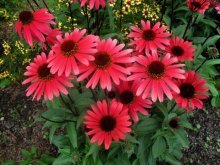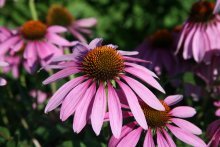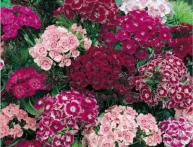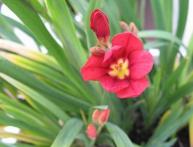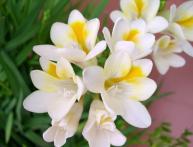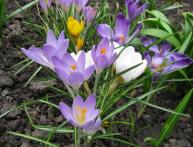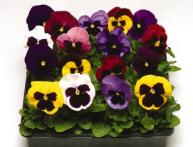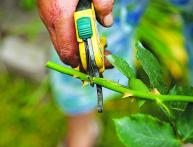Rudbeckia purpurea: tips for planting and care
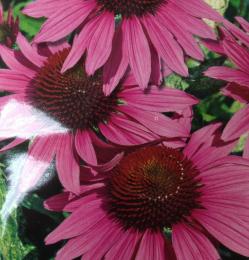
There is probably not a single gardener in the world who was not familiar with rudbeckia. This plant has won love not only due to its amazing appearance - the flower is easy to care for.
In addition, it sprouts quickly and is incredibly fragrant. Everything you still didn't know about landing and caring for rudbeckia purpurea, you will find in our article.
Content:
- A little history about the “overseas” beauty
- Rudbeckia purpurea on the site - how to plant?
- Rudbeckia - bloom. How to care for a plant?
A little history about the “overseas” beauty
It's no secret that most of the flowers that we are used to seeing in our gardens are “overseas”. So, rudbeckia was brought to us from North America. Thanks to the unpretentiousness of the plant, rudbeckia has taken root well in domestic soil.
Today, there are annual and perennial varieties of plants. Rudbeckia purpurea blooms a beautiful “dirty pink” color. People call it nothing other than echinacea.
Traditional healers often use it to treat dermatological diseases. Rudbeckia is also in wide demand in pharmacology; today, echinacea tincture is prepared from its root. According to leading experts, the tincture helps strengthen the immune system.
Where Rudbeckia purpurea is held in special esteem:
- Alternative medicine (flower petals are used for decoctions and tinctures).
- Pharmacology (production of alcohol tinctures to strengthen the immune system).
- Cosmetology (rudbeckia is included in masks and creams).
- Landscape design (the plant improves the area, giving it an original appearance).
- Beekeepers from all over the world know that rudbeckia is the most attractive plant for bees. Its smell attracts the bee family, thus helping to “keep” the swarm in its territory. The pronounced and bright smell of rudbeckia will appeal not only to arthropods.
Rudbeckia purpurea on the site - how to plant?
Like most plants, rudbeckia purpurea reproduces by seeds. If rudbeckia is already growing on your site, we advise you to prepare plant seeds for planting for the next season. To do this you will need:
- Collect plant seeds (it is better to do this in dry weather)
- Dry them, but make sure that the sun's rays do not fall on the seeds
- Collect them in a dry box and put them in a dark place.
If you do not have the opportunity to prepare seeds yourself, we recommend purchasing the product in a store or on trays. At the same time, do not forget to specify the variety of rudbeckia.
If you want to enjoy the color of rudbeckia purpurea already in mid-June, we recommend planting seeds plants in April right on your windowsill. To do this you will need:
- Pour neutral soil into a compact box
- Make shallow holes and water them
- Cover the seeds by trampling them with soil
- Water the ground
Cover the box with plastic wrap to create a greenhouse effect. If you provide proper care, then after 2 weeks the first shoots will be noticeable. Seedlings can be planted in mid-May. But remember that cold is not the best companion for a young plant.
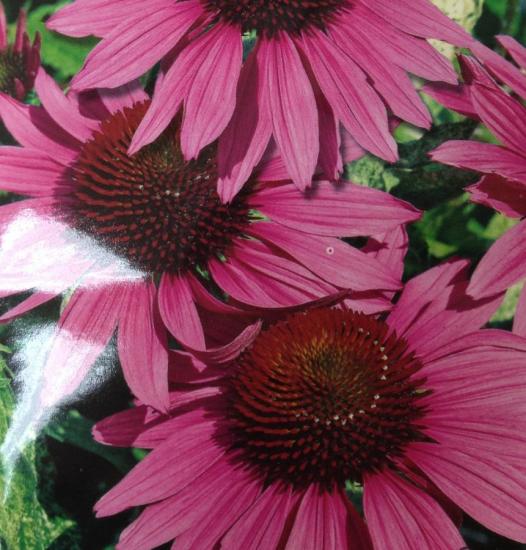
It is better to plant rudbeckia purpurea in open ground in early June.To do this, it is absolutely not necessary to dig holes. You can sprinkle the prepared seeds onto the selected soil, sprinkle earth on top (about 2-3 centimeters), and water it with water.
Practice shows that the plant almost always germinates. But what kind of care will the plant require? More on this in the next block of the article.
Rudbeckia - bloom. How to care for a plant?
Due to the fact that the plant is not fussy about its own person, basic basic care will be enough for it. And yet, how to properly care for rudbeckia purple?
Timely watering. Water for a plant is life. It is better to water rudbeckia after sunset. Remember that you need to water the plant as the soil dries out.
Applying fertilizer. If you want to get a beautiful and long-lasting color, then do not forget to fertilize. At the stage of planting seeds, you can add a couple of caps of fertilizer for flowering plants directly into the water, and water the soil with the resulting “mixture”.
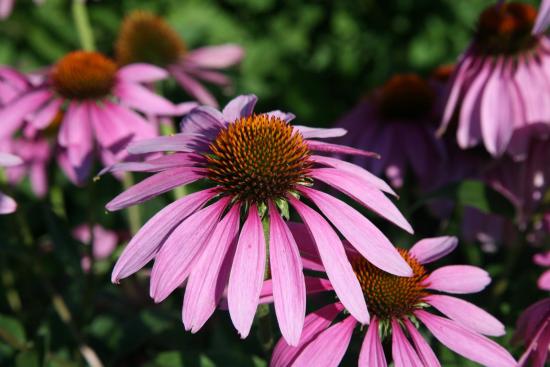
Trimming. Dried twigs and flowers should be trimmed regularly. They not only spoil the aesthetic appearance of rudbeckia, but also slow down the growth of young sprouts. Dry branches can be trimmed using garden shears.
Rudbeckia purpurea can be planted on any side. The plant is not afraid of wind, temperature changes, or direct sunlight. However, remember that it is not advisable to plant different varieties of rudbeckia in one area. Different varieties can pollinate with each other, and you may end up with an unexpected color.
Fertilize the plant carefully fertilizing. Don't get too carried away with them. Excessive amounts of minerals have a detrimental effect on the root system and can lead to root rot.Give preference only to high-quality mineral fertilizers.
Rudbeckia purpurea is one of the most popular plants. Thanks to its pleasant aroma, appearance and ease of care, more and more beginners in the flower business are trying to plant the plant. Be sure to stock up on rudbeckia seeds if you want to see this “overseas” beauty on your site!
Video about what kind of plant Rudbeckia purpurea is:

